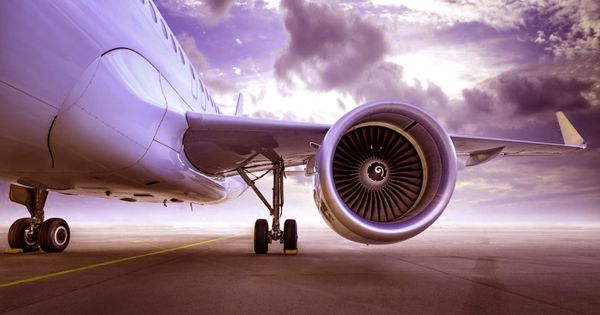Researchers say in a new Environmental Research Letters paper that intercontinental flights crisscrossing the Atlantic Ocean may be flying much longer distances and using more fuel than necessary. Instead, by better navigating the world’s jet streams, they could easily reduce their fuel consumption and emissions. Researchers discovered that by more precisely following jet stream tailwinds or avoiding headwinds, flights between London and New York could have used up to 16% less fuel, at a fraction of the cost of other emissions-cutting technologies.
The aviation industry is under pressure to reduce greenhouse gas and other emissions, and it has begun the process of decarbonization. Aircraft are lighter and use less fuel than in the past. A few airlines have begun to use biofuel blends. Small hybrid-electric and battery-electric aircraft are taking to the skies, and Airbus is investigating hydrogen-powered zero-emissions aircraft.
Airlines could save fuel and reduce emissions on transatlantic flights by hitching a better ride on the jet stream, new research has shown.
According to researchers at the University of Reading, commercial flights between New York and London last winter could have used up to 16% less fuel if they had taken advantage of fast-moving winds at altitude.
New satellites will soon make it possible to track transatlantic flights more precisely while keeping a safe distance between them. This opportunity may allow aircraft to be more flexible in their flight paths, allowing them to more precisely follow favorable tailwinds and avoid headwinds, providing the aviation sector with a cheaper and more immediate way of reducing emissions than technological advances.
“Current transatlantic flight paths mean aircraft are burning more fuel and emitting more carbon dioxide than they need to,” said Cathie Wells, a Ph.D. researcher in mathematics at the University of Reading and the study’s lead author.
“Although winds are taken into account to some extent when planning routes, considerations such as lowering total flight costs are currently given a higher priority than reducing fuel burn and pollution.”

“Upgrading to more efficient aircraft or switching to biofuels or batteries could lower emissions significantly, but will be costly and may take decades to achieve,” said Professor Paul Williams, an atmospheric scientist at the University of Reading and co-author of the new study. Simple changes to flight paths are far less expensive and can provide immediate benefits. This is significant because lower aviation emissions are urgently needed to mitigate the future effects of climate change.”
The new study, which was published today in Environmental Research Letters, examined approximately 35,000 flights in both directions between New York and London between December 1, 2019, and February 29, 2020. The team compared the fuel used during these flights to the shortest route possible at the time by flying into or around the eastward jet stream air currents.
The scientists discovered that taking better advantage of the winds would have saved approximately 200 kilometers of fuel per flight on average, amounting to a total reduction of 6.7 million kilograms of carbon dioxide emissions over the winter period. When flying west to New York, the average fuel savings per flight was 1.7 percent, and when flying east to London, the average fuel savings per flight was 2.5 percent.
The University of Reading led the research, which was conducted in collaboration with the UK National Centre for Earth Observation, the University of Nottingham, and Poll AeroSciences Ltd.
Aviation currently accounts for approximately 2.4 percent of all human-caused carbon emissions, and this figure is rising. The International Civil Aviation Organization (ICAO) and countries around the world have responded by establishing policies to improve the fuel efficiency of international flights or offset emissions, but most of this action is dependent on technological advances and thus expensive and time-consuming to implement.
Such measures have the potential to reduce fuel consumption, emissions, and the overall environmental impact. Importantly, the benefits of using advanced atmospheric modeling and high-tech weather forecasting are immediate and less expensive than other emission-cutting technologies.
Climate change is expected to have a significant impact on air travel, with previous Reading research indicating that flights will experience two to three times the amount of severe clear-air turbulence if emissions are not reduced.
















